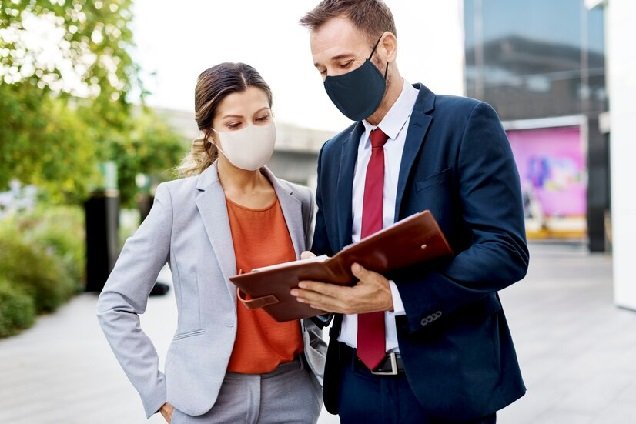
Ensuring the safety and security of high-profile individuals is not just a necessity; it’s an art form that requires precision, expertise, and constant vigilance. In today’s fast-paced world where public figures are more accessible than ever due to social media, the importance of comprehensive security measures cannot be overstated. This blog post aims to provide security personnel, experts, and high-profile individuals with valuable insights into the best practices for maintaining safety in various environments. From understanding potential threats to implementing effective security strategies, we’ll explore what it takes to protect those in the public eye.
Understanding the Unique Risks
High-profile individuals face unique risks that stem from their visibility. Unlike regular citizens, their public persona can attract unwanted attention, making them vulnerable to threats such as stalking, cyberattacks, and physical harm. Understanding these risks is the first step in formulating a robust security plan. Security personnel must remain vigilant and conduct thorough risk assessments to identify potential threats and vulnerabilities.
Their high visibility often makes high-profile individuals targets for those seeking notoriety. This threat necessitates tailored security measures that address not only physical threats but also digital ones. Security experts need to consider all aspects of an individual’s life, both online and offline, to ensure comprehensive protection.
Furthermore, the risks faced by high-profile individuals can vary greatly depending on their field, location, and public activities. A politician might face different threats compared to a celebrity, requiring specialized strategies for each scenario. Security teams must be adaptable and continuously update their protocols to stay ahead of potential risks.
Developing a Comprehensive Security Plan
Creating an effective security plan involves a multi-layered approach that covers all potential threats. This includes physical security measures, digital protections, and personal safety protocols. Developing such a plan requires input from various experts who can address each aspect of security in detail.
Physical security is often the most visible component of a security plan. It includes measures such as hiring bodyguards, securing residences, and using secure vehicles equipped to withstand attacks. For instance, utilizing protective gear like a Kevlar bag can offer additional protection against potential threats.
Digital security is equally important, especially as cyber threats become more sophisticated. High-profile individuals must ensure their online presence is secure, with strong passwords, encryption, and regular monitoring for suspicious activities. Cybersecurity experts play a crucial role in protecting sensitive information from hackers and other malicious actors.
Personal safety protocols are essential for minimizing risks in everyday life. This includes training high-profile individuals to recognize potential threats, teaching them self-defense techniques, and ensuring they know how to respond in emergency situations. By empowering individuals with knowledge and skills, security plans can become more effective.
Implementing Advanced Technology
Technology plays a pivotal role in modern security strategies. From surveillance systems to biometrics, advanced technology can enhance security efforts exponentially. Security personnel must stay up-to-date with the latest technological advancements to provide the best protection possible.
Video surveillance systems are a staple in many security plans, offering real-time monitoring that can help detect and prevent threats. These systems can be integrated with smart technology to provide immediate alerts to security teams when suspicious activity is detected.
Biometric systems offer an additional layer of security by using unique physical characteristics for identification. Fingerprint scanners, facial recognition, and even retinal scans can be employed to ensure only authorized individuals have access to sensitive areas.
Incorporating artificial intelligence (AI) and machine learning into security systems can provide predictive analytics, helping security teams anticipate potential threats before they materialize. By analyzing patterns and behaviors, AI can offer insights that human observation alone might miss.
Training and Preparedness
No security plan is complete without rigorous training and preparedness. Security personnel must undergo continuous training to stay sharp and aware of the latest threat landscapes. Similarly, high-profile individuals should be trained on how to respond to various security scenarios.
Training exercises should include simulations of potential threats, allowing security teams to practice their responses. These exercises can highlight areas for improvement and ensure that all team members are prepared for real-world situations.
Preparedness also involves creating contingency plans for emergencies. Security teams must have clear procedures in place for evacuations, medical emergencies, and other high-risk situations. Knowing how to respond quickly and efficiently can save lives.
Regular drills and evaluations of security protocols can help maintain high standards of preparedness. By continually assessing their readiness, security teams can ensure they are always equipped to handle any situation that arises.
Fostering a Culture of Security
For security measures to be truly effective, there must be a culture of security that permeates all aspects of a high-profile individual’s life. This means educating not only the individual but also their family, staff, and associates about security protocols and best practices.
Creating a culture of security involves open communication and collaboration between security personnel and high-profile individuals. This partnership ensures that everyone understands their role in maintaining safety and is committed to following security procedures.
Security awareness should extend beyond the immediate circle of a high-profile individual. By fostering a culture of security within their wider network, individuals can ensure that all those around them are vigilant and proactive in identifying potential threats.
Engaging in regular discussions about security can reinforce its importance and encourage adherence to protocols. By making security a priority, high-profile individuals can create an environment where safety is a shared responsibility.
The protection of high-profile individuals is a complex and ongoing challenge that requires a strategic approach. By understanding the unique risks, developing comprehensive plans, implementing advanced technology, prioritizing training, and fostering a culture of security, we can ensure the safety of those in the public eye. For security personnel and high-profile individuals alike, staying informed and proactive is key. If you’re ready to take your security measures to the next level, consider consulting with experts who specialize in providing tailored security solutions.







